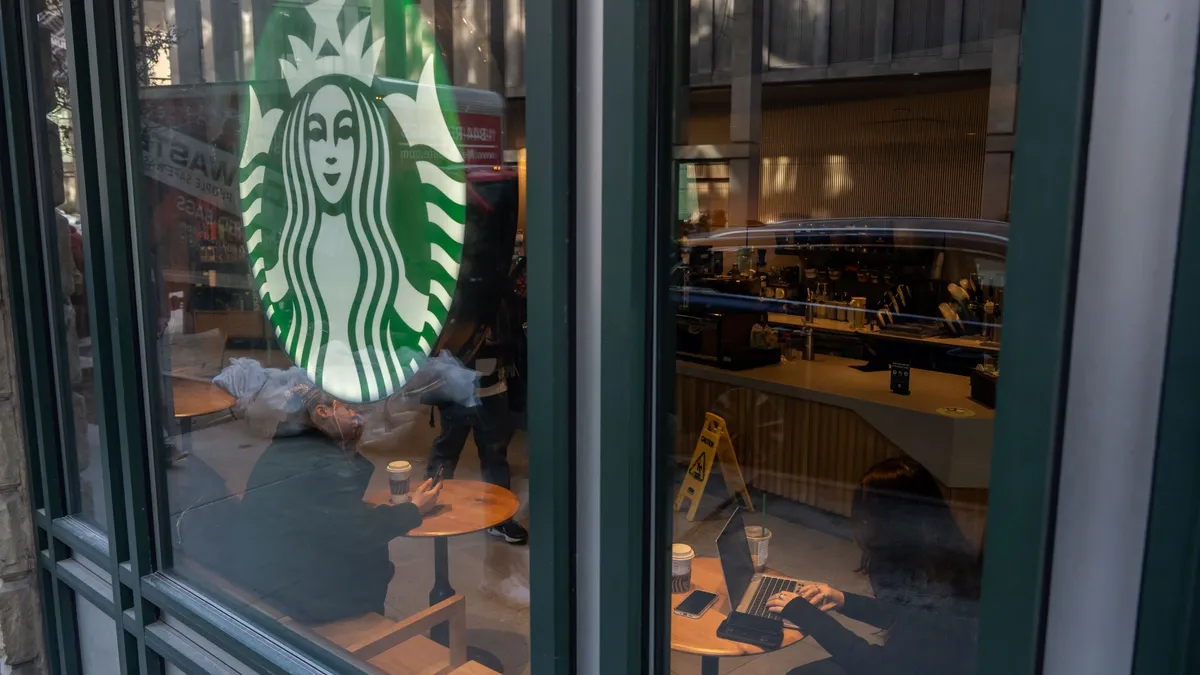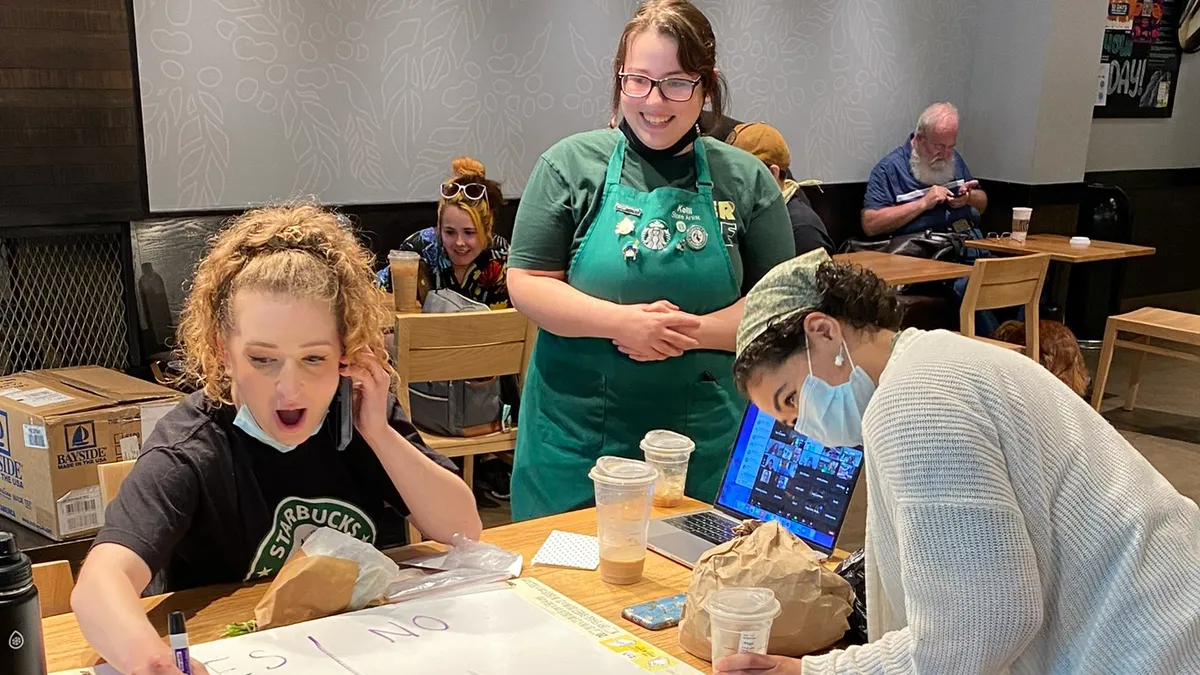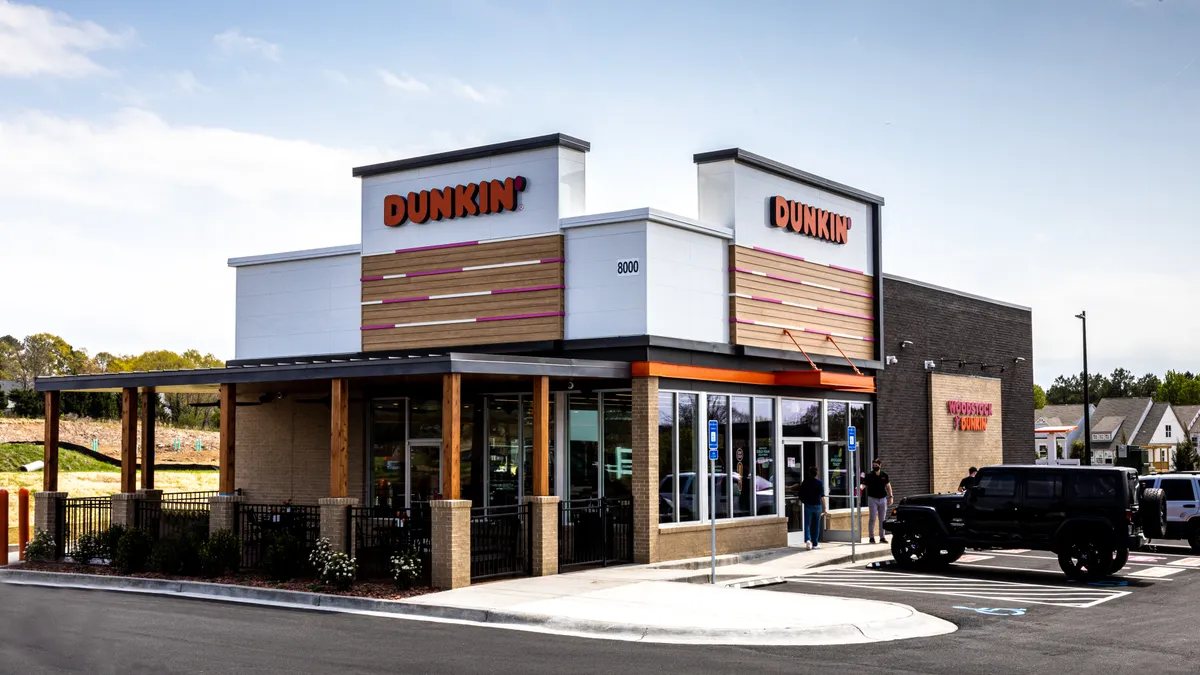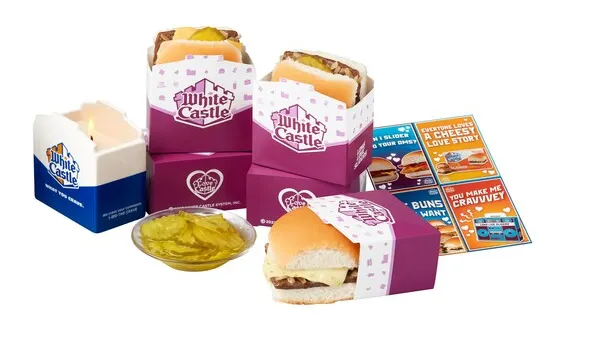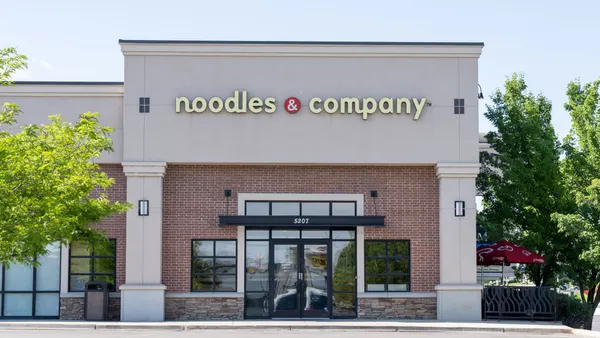Dive Brief:
- Starbucks is deploying an artificial intelligence tool intended to speed up workers’ ability to take inventory, according to a Wednesday statement penned by Deb Hall Lefevre, Starbucks’ chief technology officer.
- The tech, developed in conjunction with NomadGo, is currently live across “thousands of coffeehouses,” and will be in use across the chain’s entire North American company-operated store system by the end of September.
- Lefevre said that at cafes using the artificial intelligence systems “inventory is now counted eight times more frequently, giving us real-time visibility and enabling faster, more precise replenishment.”
Dive Insight:
The tech uses “computer vision, 3D spatial intelligence and augmented reality” to automate aspects of inventory counting. A publicity video shared with the announcement shows workers scanning fridges and stockrooms with the cameras on store tablets, which automatically tabulate the amount and type of ingredients on hand.
Lefevre, who joined the chain in 2022, said the technology may soon be able to automate some restocking orders.
The tech “sets the stage for smarter supply chain optimization and more frequent inventory replenishment,” Lefevre wrote. The tech is meant to reduce stockouts that leave cafes without popular ingredients.
CEO Brian Niccol said on the chain’s most recent earnings call that stockouts were unacceptably high and that the supply chain team was working to reduce them.
Earlier this year, Starbucks cut a significant portion of its menu, reducing complexity and trimming SKUs. Now the brand is growing its offerings again — starting with items like a protein-heavy cold foam. Given that context, new supply chain management tools could help Starbucks ensure proper availability of new menu items and avoid potential operational snags.
Starbucks has looked to algorithmic changes and technologies to make its store-level operations more efficient of late. Those investments have included the ongoing rollout of the chain’s SmartQueue order-sequencing algorithm. Niccol said the algorithm has driven “a double-digit improvement in cafe orders handed off in under four minutes, with 80% of in-cafe orders now meeting that target,” at test locations.



